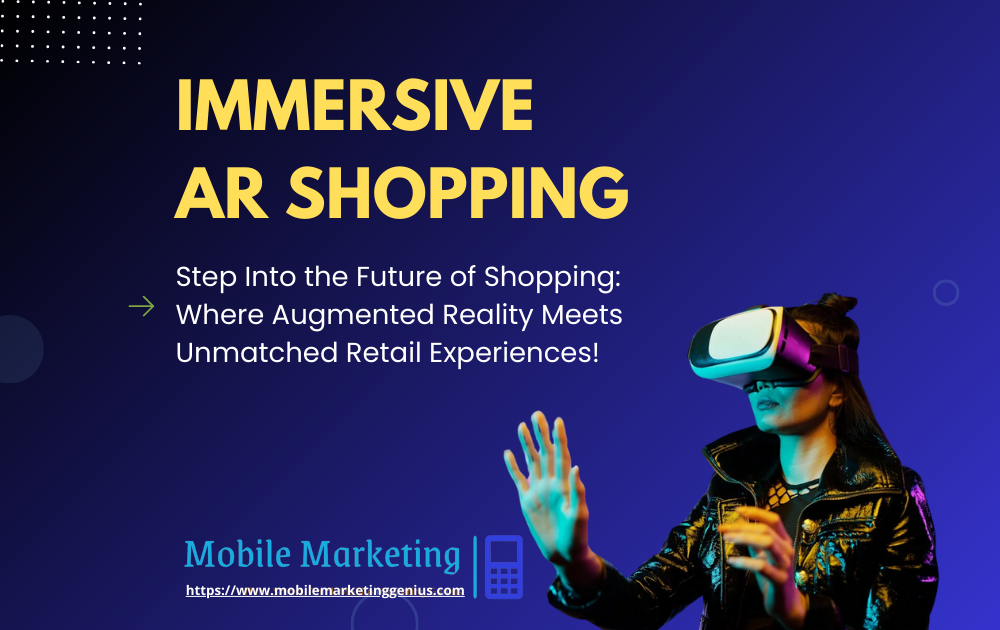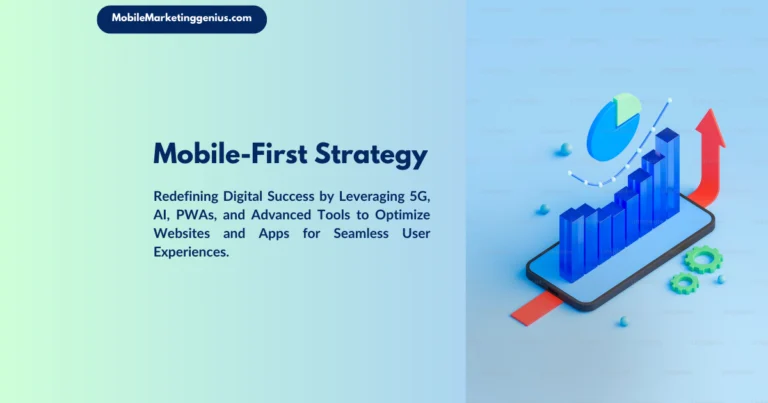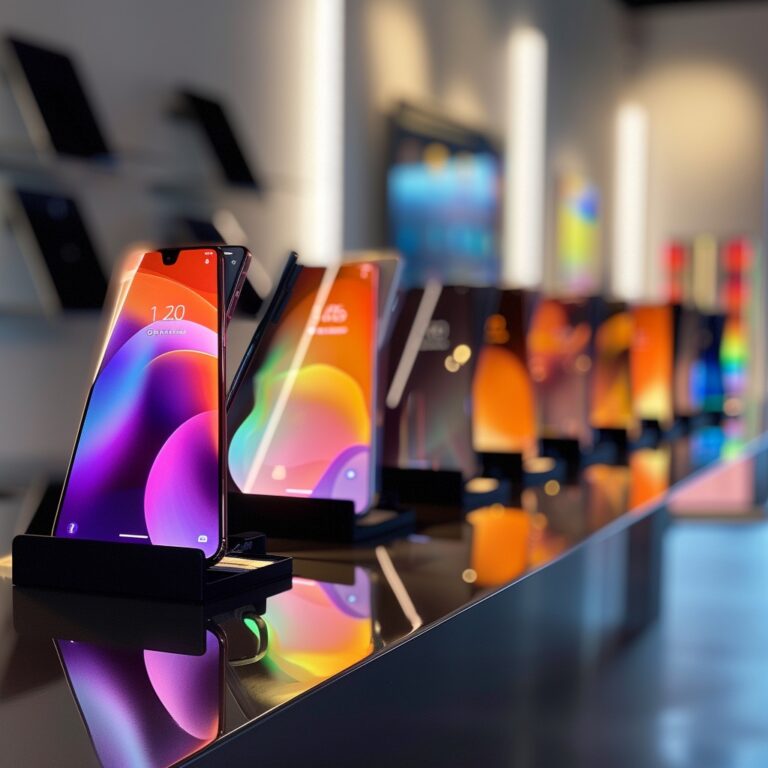The Bright Future of Retail: Immersive Augmented Reality Shopping That Inspires

In today’s digital era, shopping is undergoing a massive transformation, with augmented reality shopping leading the charge. By seamlessly merging the physical and digital realms, this innovative approach enables consumers to visualize and interact with products in ways that were once unimaginable. From virtual try-ons to 3D room visualizations, immersive AR shopping enhances customer engagement and satisfaction.
The adoption of augmented reality shopping apps has skyrocketed, with major brands leveraging the technology to provide tailored, interactive experiences. This convergence of augmented reality AR and virtual technologies is reshaping how consumers perceive shopping. As retail evolves, understanding how AR shopping apps work, their benefits, and the challenges involved becomes crucial for businesses aiming to stay ahead. This article delves into the mechanics, applications, and future of augmented reality mobile shopping apps, guiding businesses to harness their full potential and deliver transformative shopping experiences augmented reality can offer.
Table of Contents
Understanding Immersive AR Shopping
Augmented reality (AR) overlays digital content onto the real world, enhancing the shopping experience by providing interactive and personalized tools for consumers. Unlike virtual reality (VR), which immerses users in a completely digital environment, AR enriches the physical world with virtual elements, making it especially suited for shopping environments.
Key features of immersive AR shopping include:
- Interactive Product Visualization: Customers can view and manipulate 3D models of products in real time.
- Try-Before-You-Buy Experiences: Virtual try-ons for fashion, accessories, and beauty products reduce hesitation.
- Environment Integration: Tools like furniture placement apps allow users to visualize items in their own spaces.
The uniqueness of augmented reality shopping apps lies in their ability to bridge the gap between physical and digital shopping, offering consumers confidence and convenience. Additionally, shopping experiences augmented reality enables are tailored, interactive, and immersive, making them more appealing to modern consumers. With the rise of AR-compatible smartphones, these experiences have become more accessible and impactful, fostering a more engaging shopping journey.
The Rise of AR in Retail
Retailers are rapidly adopting AR shopping apps to revolutionize customer experiences. Statistics reveal that augmented reality app shopping is more than a trend—it’s a paradigm shift.
- Market Growth: The AR in retail market was valued at $2.4 billion in 2020 and is projected to reach $17.9 billion by 2030, growing at a CAGR of 23.4% (Source: Allied Market Research).
- Consumer Adoption: 71% of shoppers prefer retailers that offer AR experiences (Source: Snap Consumer AR Report).
Industries embracing augmented reality shopping apps include:
- Fashion: Virtual fitting rooms enhance customer confidence and reduce return rates.
- Beauty: AR-powered apps like Sephora Virtual Artist allow users to test products virtually with precision.
- Home Décor: Apps like IKEA Place offer realistic room visualization to enhance buying confidence.
Case studies highlight the success of brands like Nike, which uses shopping app augmented reality to let customers customize sneakers virtually. Similarly, Amazon AR View allows users to place products in their spaces, improving purchase confidence and providing a seamless augmented reality in retail experience. These examples illustrate the growing potential of AR to redefine the shopping landscape.
“52% of consumers say they would be more likely to shop from a retailer offering AR experiences.” (Source: NielsenIQ)
Technology Behind Immersive AR Shopping
How AR Works in Shopping
Augmented reality shopping apps integrate advanced hardware and software to deliver seamless experiences. The process involves:
- Device Cameras: Capture real-world environments and relay data to AR software.
- AR Software: Detects surfaces and anchors virtual objects, ensuring proper placement in real-world settings.
- Rendering Engines: Display realistic 3D models in real time, creating immersive and engaging experiences augmented reality can offer.
- AI and Machine Learning: Personalize recommendations and improve object recognition to refine user experiences.
Key Technologies Used
- AR SDKs: Platforms like ARKit (Apple) and ARCore (Google) empower developers to create robust AR-based shopping apps.
- 3D Modeling: Ensures accurate and lifelike product representations, making the experience tangible for users.
- Cloud Computing: Supports real-time processing and scalability, enhancing the responsiveness of augmented reality AR and virtual tools.
- 5G Networks: Reduces latency, enabling smoother AR experiences and supporting complex interactions.
- Computer Vision: Analyzes physical environments to accurately place digital objects, ensuring the AR elements align with the real world.
Devices Supporting AR Shopping
- Smartphones and Tablets: Built-in AR capabilities make these devices the most popular for augmented reality mobile shopping apps.
- Smart Glasses: Devices like Apple Vision Pro promise to elevate immersive AR shopping with hands-free interaction.
- In-Store AR Kiosks: Provide engaging and large-scale experiences within physical retail spaces, offering a blend of traditional and modern shopping methods.
Use Cases of Immersive AR Shopping
Fashion and Apparel
- Virtual fitting rooms enable users to try on clothes and accessories virtually.
- Example: ASOS and Zara’s augmented reality shopping apps enhance online fashion experiences, offering size and style suggestions.
Beauty and Cosmetics
- Apps like Sephora Virtual Artist allow users to experiment with makeup looks using AR. This ensures buyers choose the right products before purchasing, enhancing satisfaction.
Home Décor and Furniture
- IKEA Place lets customers visualize how furniture fits in their spaces before purchasing. This shopping experience augmented reality creates reduces uncertainty and enhances customer confidence.
Automotive Showrooms
- AR tools showcase car interiors and customization options interactively.
- Example: BMW’s shopping augmented reality app for vehicle customization.
E-Commerce
- Retailers like Amazon use AR shopping apps to provide detailed product visualizations that improve decision-making and reduce returns.
“Interactive AR experiences reduce product return rates by up to 22%.” (Source: Shopify Plus)
Real Estate
- Virtual property tours via AR help buyers explore properties remotely, offering realistic views and interactive features.
Table 1: Use cases
| Industry | AR Use Case | Example Brand/Tool | Customer Benefit |
|---|---|---|---|
| Fashion | Virtual fitting rooms | ASOS, Zara | Improved fit and reduced returns |
| Beauty | Virtual makeup trials | Sephora Virtual Artist | Accurate product selection |
| Home Décor | Furniture placement visualization | IKEA Place | Increased confidence in purchase |
| Automotive | Interactive car customization | BMW AR App | Enhanced decision-making |
| E-Commerce | Detailed product visualization | Amazon AR View | Better understanding of products |
| Real Estate | Virtual property tours | Zillow 3D Home | Remote and realistic property viewing |
Benefits of Immersive AR Shopping
Enhanced Customer Experience
Augmented reality shopping offers personalization and interactivity, allowing users to visualize and interact with products in unique ways. Virtual try-ons reduce uncertainty, enhancing satisfaction. These experiences augmented reality enables are redefining convenience and engagement in retail.
Increased Engagement and Conversion Rates
- Interactive product demonstrations drive higher engagement.
- AR boosts conversion rates by up to 40% (Source: Shopify Plus). Retailers leveraging augmented reality in retail see improved decision-making among customers.
Competitive Advantage
Brands leveraging augmented reality shopping apps differentiate themselves, creating memorable shopping experiences that build customer loyalty and attract new buyers.
Sustainability
By reducing product returns and wastage, AR shopping apps contribute to environmental sustainability and align with global sustainability goals.
Challenges in Implementing AR Shopping
Cost Barriers
Developing sophisticated shopping app augmented reality features requires significant investment, often limiting smaller businesses.
Technical Limitations
- Device compatibility and internet connectivity can hinder adoption.
- AR features may not work uniformly across all devices, impacting user satisfaction.
Privacy Concerns
Users may hesitate to share personal data for AR personalization, requiring businesses to address data security comprehensively.
Learning Curve
Educating users about the benefits of AR-based shopping apps is essential for widespread adoption, as not all customers are familiar with the technology.
The Role of AI and Data in AR Shopping
Personalization
AI-powered augmented reality shopping apps analyze user preferences to offer tailored experiences, ensuring relevance and satisfaction. For instance, AI can recommend products based on a user’s past behavior and real-time interactions within the app. This enables a more intuitive and engaging shopping experience augmented reality solutions provide.
Predictive Analytics
AI and data analytics allow retailers to predict customer preferences and optimize AR features accordingly. For example, by analyzing trends and user behavior, businesses can adjust their offerings in augmented reality AR and virtual environments to maximize conversions. Predictive analytics also supports inventory management by forecasting demand based on AR interactions.
Object Recognition
Object recognition powered by AI enhances the functionality of AR tools. By accurately identifying and placing digital objects in physical spaces, AI ensures that experiences augmented reality offers are realistic and seamless. This capability is crucial for applications like furniture placement and virtual try-ons.
Emerging Technologies
AI integrates with IoT and edge computing to provide real-time insights and improve the scalability of augmented reality in retail. These technologies enable faster processing and reduce latency, making AR experiences more fluid and immersive.
Future Trends in Immersive AR Shopping
Advancements in AR Hardware
The development of AR glasses, such as Apple Vision Pro, is set to revolutionize augmented reality mobile shopping apps. These devices offer hands-free interaction, enabling users to explore products in a more natural and intuitive manner. Foldable devices with enhanced AR capabilities will further expand the accessibility of shopping experiences augmented reality enables.
Integration with Blockchain
Blockchain technology can provide secure and transparent transactions in AR shopping environments. This integration ensures that purchases made in augmented reality AR and virtual spaces are trustworthy and protected from fraud, fostering consumer confidence.
Metaverse Shopping
The metaverse is expected to redefine how consumers shop, blending augmented reality in retail with fully immersive virtual environments. AR will serve as a gateway to these digital marketplaces, allowing users to navigate virtual malls and interact with products in lifelike settings. This trend promises to create a unified shopping ecosystem that bridges the physical and virtual worlds.
AI-Driven Innovations
Future AR shopping platforms will leverage AI to predict emerging consumer trends and provide hyper-personalized experiences. This will include dynamic pricing, tailored promotions, and real-time customer support within AR-based shopping apps.
Tips for Businesses to Adopt Immersive AR Shopping
Evaluate Business Readiness
Before diving into AR, businesses should assess their readiness by analyzing their target audience, industry trends, and available resources. This ensures that the implementation of augmented reality shopping apps aligns with their goals and capabilities.
Focus on User-Friendly Interfaces
A seamless and intuitive user interface is crucial for the success of shopping app augmented reality features. Retailers should prioritize ease of use to ensure that customers can effortlessly navigate and engage with AR tools.
Collaborate with AR Solution Providers
Partnering with experienced AR developers and technology providers can streamline the creation of augmented reality mobile shopping apps. These collaborations ensure that the technology is implemented effectively and remains scalable.
Continuously Test and Optimize
Gathering user feedback is essential for refining AR experiences. Businesses should conduct regular testing and updates to enhance shopping experiences augmented reality fosters, ensuring that the technology remains relevant and impactful.
Embrace Marketing Opportunities
Promoting AR features through social media and other digital channels can attract tech-savvy consumers. Highlighting the benefits of augmented reality in retail through targeted campaigns will boost awareness and adoption.
Conclusion
AR shopping is reshaping the retail industry, offering unprecedented opportunities for brands and consumers alike. By investing in shopping augmented reality apps and leveraging technologies like AI and 5G, businesses can stay ahead in a rapidly evolving market. As AR continues to grow, its potential to create immersive, personalized shopping experiences will undoubtedly redefine the future of retail. It’s time for brands to embrace this game-changing technology and transform the way they engage with customers.
By delivering seamless augmented reality in retail experiences, businesses can drive engagement, enhance customer loyalty, and lead the way into the next generation of commerce. The future of shopping is here, and it’s powered by AR.







2 Comments
Comments are closed.